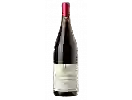
Winery Pascal LambertLes Graves Chinon
In the mouth this red wine is a powerful with a nice balance between acidity and tannins.
This wine generally goes well with poultry, beef or game (deer, venison).
Taste structure of the Les Graves Chinon from the Winery Pascal Lambert
Light | Bold | |
Smooth | Tannic | |
Dry | Sweet | |
Soft | Acidic |
In the mouth the Les Graves Chinon of Winery Pascal Lambert in the region of Loire Valley is a powerful with a nice balance between acidity and tannins.
Wine flavors and olphactive analysis
On the nose the Les Graves Chinon of Winery Pascal Lambert in the region of Loire Valley often reveals types of flavors of cherry, oaky or earthy and sometimes also flavors of cranberry, earth or oak.
Food and wine pairings with Les Graves Chinon
Pairings that work perfectly with Les Graves Chinon
Original food and wine pairings with Les Graves Chinon
The Les Graves Chinon of Winery Pascal Lambert matches generally quite well with dishes of beef, lamb or game (deer, venison) such as recipes of vegetable noddles, mansaf, or jordanian lamb (jordan) or casserons in the country style.
Details and technical informations about Winery Pascal Lambert's Les Graves Chinon.
Discover the grape variety: Cabernet franc
Cabernet Franc is one of the oldest red grape varieties in Bordeaux. The Libourne region is its terroir where it develops best. The terroirs of Saint-Emilion and Fronsac allow it to mature and develop its best range of aromas. It is also the majority in many blends. The very famous Château Cheval Blanc, for example, uses 60% Cabernet Franc. The wines produced with Cabernet Franc are medium in colour with fine tannins and subtle aromas of small red fruits and spices. When blended with Merlot and Cabernet Sauvignon, it brings complexity and a bouquet of aromas to the wine. It produces fruity wines that can be drunk quite quickly, but whose great vintages can be kept for a long time. It is an earlier grape variety than Cabernet Sauvignon, which means that it is planted as far north as the Loire Valley. In Anjou, it is also used to make sweet rosé wines. Cabernet Franc is now used in some twenty countries in Europe and throughout the world.
Last vintages of this wine
The best vintages of Les Graves Chinon from Winery Pascal Lambert are 2017, 2015, 2012, 2010 and 2013.
Informations about the Winery Pascal Lambert
The Winery Pascal Lambert is one of of the world's greatest estates. It offers 29 wines for sale in the of Chinon to come and discover on site or to buy online.
The wine region of Chinon
The wine region of Chinon is located in the region of Touraine of Loire Valley of France. Wineries and vineyards like the Domaine Marc Brédif or the Château de Saint Louans produce mainly wines red, white and pink. The most planted grape varieties in the region of Chinon are Cabernet franc, Chenin blanc and Cabernet-Sauvignon, they are then used in wines in blends or as a single variety. On the nose of Chinon often reveals types of flavors of cherry, eucalyptus or orange and sometimes also flavors of cola, fig or game.
The wine region of Loire Valley
The Loire Valley is a key wine region in western France. It follows the course of the Loire River on its Long journey through the heart of France, from the inland hills of the Auvergne to the plains of the French Atlantic coast near Nantes (Muscadet country). Important in terms of quantity and quality, the region produces large quantities (about 4 million h/l each year) of everyday wines, as well as some of France's greatest wines. Diversity is another of the region's major assets; the styles of wine produced here range from the light, tangy Muscadet to the Sweet, honeyed Bonnezeaux, the Sparkling whites of Vouvray and the juicy, Tannic reds of Chinon and Saumur.
The word of the wine: Deposit
Solid particles that can naturally coat the bottom of a bottle of wine. It is rather a guarantee that the wine has not been mistreated: in fact, to avoid the natural deposit, rather violent processes of filtration or cold passage (- 7 or - 8 °C) are used in order to precipitate the tartar (the small white crystals that some people confuse with crystallized sugar: just taste to dissuade you from it)














